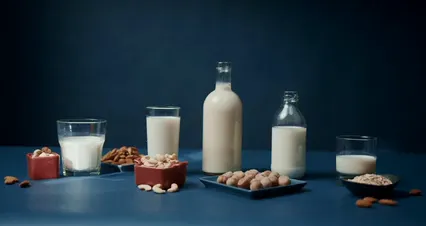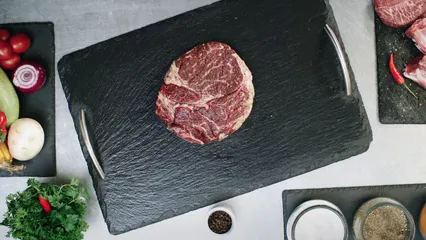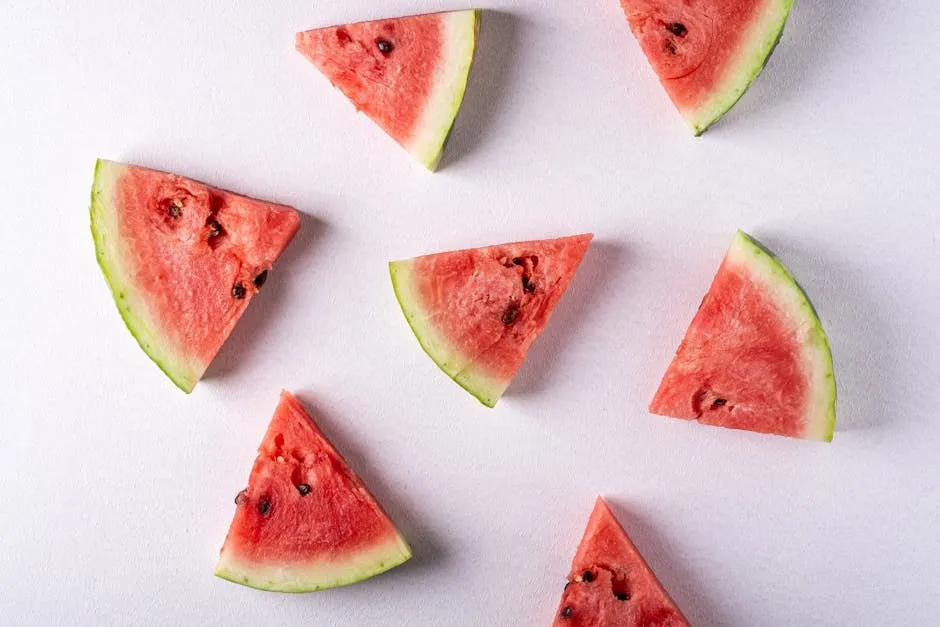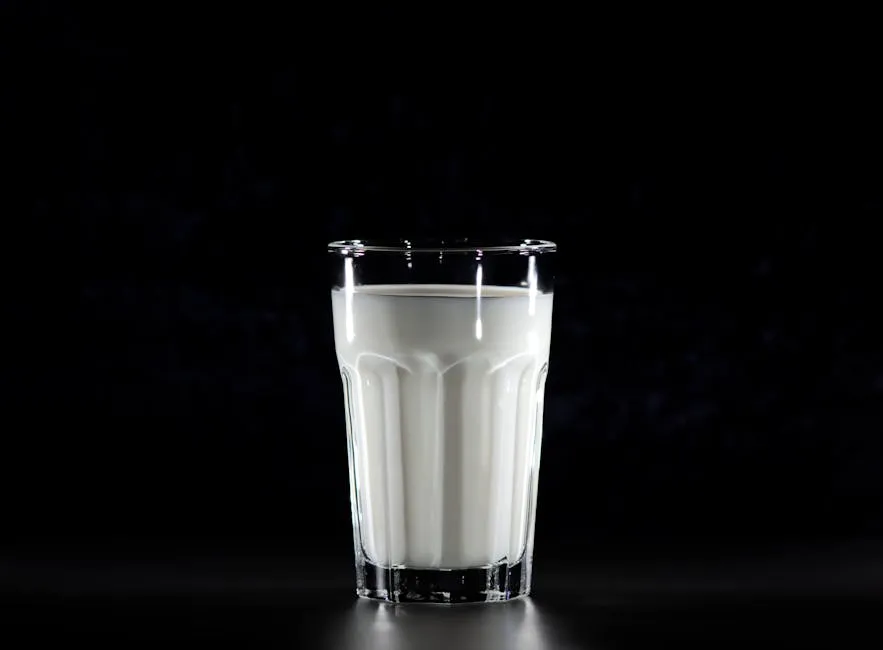
Why No Dairy After Tooth Extraction? The Essential Guide for Recovery
Introduction
In the world of dental care, few procedures strike as much fear into our hearts as tooth extraction. Whether it’s a pesky wisdom tooth or a damaged molar, the removal can leave us feeling vulnerable and in need of a little TLC. But here’s the kicker: amid all the post-extraction tips and tricks, one directive often stands out—avoid dairy. Why?
This advice isn’t just a random dietary suggestion. It’s deeply rooted in the recovery process. You might wonder how something as innocent as yogurt or cheese could affect your healing. Well, stick around, and we’ll unravel the mysteries behind this dairy dilemma.
First, let’s understand the healing process after a tooth extraction. When a tooth is removed, it creates an open wound in your mouth. The formation of a blood clot in the socket is essential for proper healing. Dairy products can interfere with this crucial step, potentially leading to complications like dry socket—a condition that can make you wish you’d never dared to visit the dentist.
Additionally, dairy products can introduce unwanted bacteria into the surgical site. This can heighten the risk of infection, which is the last thing you want when your mouth is already in a state of recovery.
But fear not! In this article, we’ll explore the impact of dairy on recovery, arm you with delicious, safe alternatives, and guide you through your healing journey. So, prepare to navigate the milky way of post-surgery nutrition like a pro!

Summary
The recommendation to avoid dairy products after tooth extraction is rooted in concerns over infection, discomfort, and the healing process. While dairy is typically associated with health benefits, it may introduce bacteria into the surgical site, increasing the risk of infection. Additionally, the creamy texture of dairy products can interfere with blood clot formation, which is essential for healing. This disruption can lead to painful complications like dry socket, arising when the blood clot is dislodged or doesn’t form adequately.
In this comprehensive guide, we will cover:
- The reasons behind avoiding dairy post-extraction.
- The potential risks associated with dairy consumption during recovery.
- Nutritional alternatives that can aid healing while keeping your palate satisfied.
- Recommendations for foods to enjoy and those to steer clear of in the days following your procedure.
By the end of this article, you will be well-equipped with knowledge to navigate your post-extraction diet with confidence and ease. With the right information, you can turn this healing process into an opportunity to explore tasty, nutritious options while steering clear of the dairy pitfalls. So, let’s get started on your journey to recovery!

The Risks of Dairy Consumption After Tooth Extraction
Infection
Dairy products can be sneaky little troublemakers. They harbor bacteria that can easily introduce themselves into your freshly extracted tooth socket. This risk is especially high in cold, creamy delights like milk and yogurt. The mouth is a warm, inviting environment for bacteria. When you consume dairy, you might unwittingly invite these unwelcome guests to a party your healing gums don’t want.
Studies suggest that dairy consumption can increase the risk of infection after dental procedures. In fact, a significant number of dental professionals recommend avoiding dairy for this very reason. A study conducted among oral surgeons indicated that a large percentage advised against dairy to prevent complications. The last thing you want after a tooth extraction is an infection that could lead to further discomfort and a longer recovery.

Dry Socket
Now, let’s talk about dry socket—the horror story of post-extraction experiences. Imagine your tooth’s socket is a cozy little home, and a blood clot is the homeowner ensuring everything stays safe and sound. Dairy can be the uninvited guest that disrupts this peaceful scenario. When dairy is consumed, its thick texture can interfere with blood clot formation.
Dry socket occurs when this crucial blood clot is dislodged or fails to form properly, exposing the bone and nerves beneath. Ouch! This condition can lead to intense pain and prolong your healing process. So, if you fancy keeping that blood clot snug in its socket, it’s best to steer clear of dairy products for a while.
Inflammation and Swelling
Swelling and inflammation are part of the healing process, but dairy can turn that minor inconvenience into a full-blown drama. Dairy products can exacerbate inflammation around the extraction site. Some dental professionals have noted that patients consuming dairy experience increased swelling and discomfort.
Personal anecdotes from those who’ve been through tooth extractions echo this sentiment. Many have reported that even a small amount of yogurt or ice cream led to increased swelling and prolonged discomfort. It’s like inviting a friend who never leaves—nobody enjoys that! To ensure a smooth recovery, it’s best to avoid dairy while your mouth is busy healing.

Nutritional Alternatives to Dairy
Delicious Dairy-Free Options
Calcium Sources
Looking for calcium without the cow? Leafy greens are your best friends! Kale and spinach pack a powerful punch of calcium, perfect for bone health. Not a fan of salads? No problem! You can enjoy fortified plant-based milks like almond milk, soy milk, or oat milk. They not only provide calcium but also come with a delightful variety of flavors.

Protein-Rich Foods
Protein is essential for tissue repair. Tofu, legumes, and eggs are excellent sources that can help your body bounce back. Smoothies can be a game-changer here. Blend your favorite fruits with protein powder, and you’ll have a nutritious treat that’s easy to consume. Plus, it’s a tasty way to sneak in those essential nutrients!

Hydrating Foods
Staying hydrated is crucial, especially after surgery. Fruits and veggies with high water content, like cucumbers and watermelon, can help keep you hydrated while being gentle on your healing mouth. They’re refreshing and easy to eat, making them a perfect addition to your recovery diet.

Embracing Soft Foods
Soft foods should be your go-to during recovery. Think mashed potatoes, well-cooked pasta, and pureed soups. These options are not only gentle on the extraction site but also comfort food at its finest. To make them even more enjoyable, try adding herbs or spices to pack a flavor punch without irritating your mouth. Remember, your diet is a short-term change for a long-term gain—your dental health!

Foods to Avoid After Tooth Extraction
Dairy Products
To ensure a smooth recovery after tooth extraction, it’s crucial to keep certain foods off your plate. First on the list? Dairy products! Here are the main culprits to steer clear of:
- Milk: While milk is often considered a health staple, its creamy texture can disrupt the healing process. It might introduce bacteria into the fresh wound, increasing the risk of infection. No one wants more drama in their mouth, right?
- Cheese: Yes, cheese is delicious, but it can get stuck in the extraction site. This can lead to a bacterial buildup that causes infection. It’s best to avoid cheese until you’re fully healed.
- Yogurt: Ah, the perennial favorite yogurt! But here’s the catch: it can also harbor bacteria. Plus, its cold temperature might not be your best friend when your mouth is already sensitive.
So, while these dairy delights may tempt you, it’s wise to hold off for a bit. Your healing mouth will thank you!

Understanding the reasons for avoiding dairy after tooth extraction can significantly improve your recovery experience. why no dairy after tooth extraction
Other Foods to Avoid
Apart from dairy, there are other foods to dodge in your post-extraction diet:
- Hard, Crunchy Foods: Think nuts, chips, and pretzels. These can be the villains of your recovery, as they require chewing that could disturb the healing socket and lead to complications.
- Spicy, Acidic Foods: Foods with a kick, like hot sauces or citrus fruits, can irritate the extraction site. This irritation might lead to increased pain and discomfort, so it’s best to keep them on the shelf for now.
- Hot Foods and Beverages: Piping hot soups or beverages can disturb the delicate blood clot forming in your mouth. Instead of that steaming cup of joe, opt for lukewarm or cool drinks to avoid any mishaps.
By steering clear of these foods, you can create a more comfortable environment for healing. Remember, your mouth is on a delicate mission right now!

Conclusion
In conclusion, while dairy products are often deemed healthy, their consumption after tooth extraction can lead to complications that hinder healing. By understanding the reasons behind this advice and exploring alternative nutrient-rich foods, you can significantly improve your recovery experience. Focus on soft, nourishing options that support the healing process and keep discomfort at bay.
Your dental health is an investment in your overall well-being, and following these dietary guidelines will help ensure a smooth recovery journey. Take care of that mouth, and soon enough, you’ll be back to enjoying all your favorite foods!

FAQs
Can I eat yogurt after tooth extraction?
Yogurt can be a tricky topic post-extraction. While it’s soft and usually easy to eat, it might not be the best choice right away. Some yogurts contain active cultures, which can introduce bacteria to the healing site. If you’re craving yogurt, opt for plain, unsweetened varieties and wait a few days after your extraction. Greek yogurt is thicker and may be less irritating. Just pay attention to how your mouth feels, and if there’s discomfort, it might be best to hold off a little longer.
What about ice cream?
Ice cream is often seen as a soothing treat after dental work. The cold sensation can numb your mouth, providing temporary relief. However, moderation is key! Soft ice cream without hard mix-ins is generally acceptable a day or two after surgery. Still, you should be cautious. The added sugar can lead to bacteria growth, so choose options with fewer ingredients. If you can stick to soft, creamy varieties, ice cream can be a delightful way to treat yourself while healing.
How long should I avoid dairy after surgery?
The timeline for avoiding dairy varies from person to person. As a general rule, it’s wise to steer clear of dairy for at least the first 48 hours post-extraction. This allows your body to focus on healing without any potential disruptions. Individual recovery can differ based on factors like the complexity of the extraction and your overall health. Listen to your body: if you feel good after a couple of days, you might cautiously reintroduce small amounts of dairy. Just keep an eye out for any discomfort.
Are there any dairy substitutes that are safe?
Absolutely! There are plenty of dairy-free alternatives that can provide essential nutrients without the risks associated with dairy. Non-dairy yogurts made from almond, coconut, or soy milk are delicious options. They often come fortified with calcium and vitamin D, helping to support your recovery. Plant-based milks, like almond or oat milk, are also great choices. They can be used in smoothies or enjoyed on their own. These options ensure you don’t miss out on nutrition while keeping your healing mouth happy!
Please let us know what you think about our content by leaving a comment down below!
Thank you for reading till here 🙂
All images from Pexels




